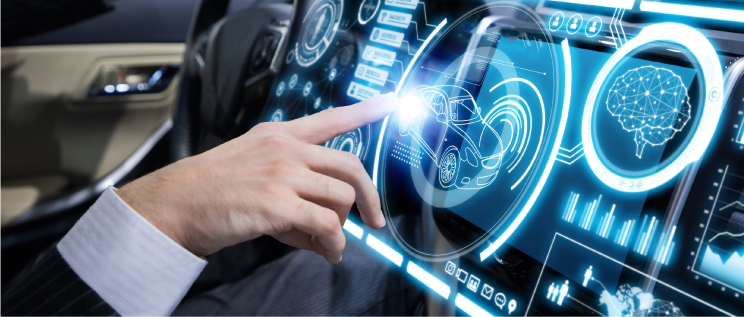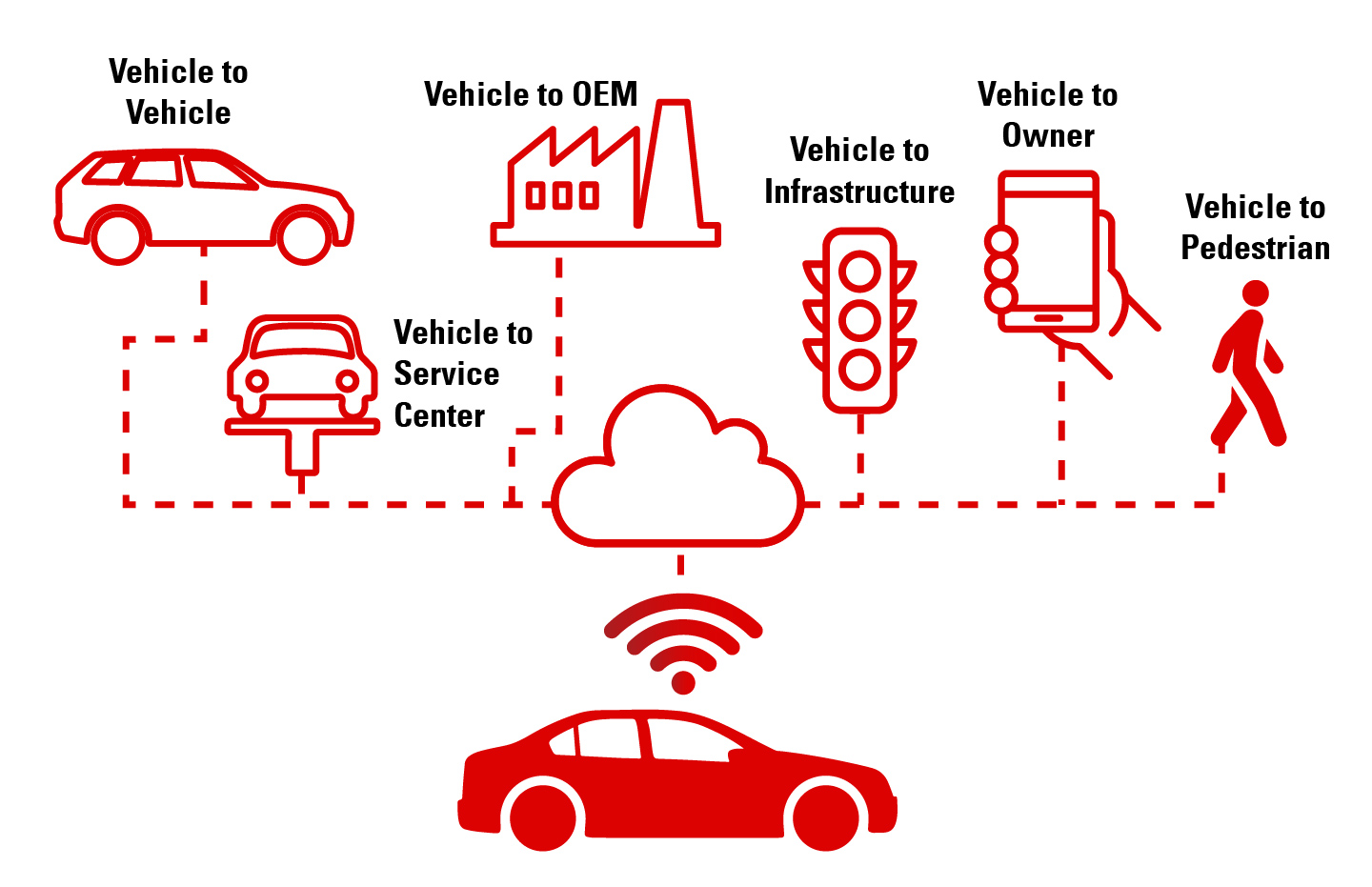Software-Defined Vehicles: Where We Are and Where We’re Heading
April 12, 2023

Think about how far we’ve come from the humble mobile flip phone to the smartphones that dominate the market today.
In the automotive industry, we’re facing a similar revolution as we transition traditional vehicles into software-defined vehicles (SDVs). By 2030, software is expected to account for as much as 50 percent of a new vehicle’s value. This software will enable vehicles to communicate with each other, their environment – including infrastructure, buildings and even pedestrians – as well as detect the environmental conditions around them.
For consumers, the biggest benefits from connected, SDVs will be even greater safety, convenience and performance – and a driving experience that gets better over time. For OEMs, the biggest benefits will be closer relationships with their drivers over the lifetime of the vehicle and differentiating their brand’s driving and ownership experience. OEMs are also seeking strategic partners – like Nexteer – to leverage software expertise to overcome challenges in the SDV space.

Looking ahead to the Software-Defined Vehicle
While we’re certainly making strides toward SDVs, today’s driver experience is still primarily defined by hardware with software playing a supporting role. With hardware-defined vehicles, the driver experience is “static” and its features and functions do not update or improve over time.
True SDVs will create new possibilities for OEMs and suppliers to improve safety, convenience and performance, with benefits such as:
- Extending Platform & Subsystem Lifespans: Hardware will remain relevant longer, while over-the-air (OTA) updates will deliver new features for drivers, similar to how a smartphone downloads updates. This means that introducing new content and features doesn’t have to stop at the end of the production line – they can be introduced to vehicles already on the road, helping automakers strengthen brand loyalty, enhance the driver experience and leverage real-world, anonymized data to improve quality.
- Improving Vehicle Health Management: Software can be used to improve overall vehicle health management by providing drivers with new vehicle insights that can be used for proactive, convenient maintenance (and potentially drive down warranty costs for OEMs and identify needed maintenance early to avoid costly repairs down the road for consumers). OTA updates will also allow OEMs to adjust or add features and functions throughout the vehicle’s lifespan – all without the vehicle owner making a trip to the dealership for service.
- Powering Advanced Driver Assistance Systems (ADAS): Software will continue to enable new assisted and automated driving technologies such as Automatic Emergency Steering and more – improving safety by maneuvering in response to dangers.
- Enabling Vehicle-to-Everything (V2X): With V2X communications, connected vehicles can evaluate signals from their steering systems or other chassis components to determine road conditions and identify potential hazards such as icy or wet roads. These signals can be communicated to trailing vehicles via the cloud to warn them of an upcoming hazard. Also, think about driving apps that tell drivers the fastest way to get to their destinations. Perhaps, these insights can be used to tell drivers the safest route during inclement weather or to avoid roads in need of repair.
- Altering the Steering Feel: As a software-tuning expert for steering feel in today’s vehicles, we foresee the software-defined steering system (combined with Steer-by-Wire) as an opportunity to offer almost limitless tuning and variable steering ratio for experiences tailored to the driver and the driving environment. Steering feel can be programmed to feel different across different vehicles, such as a luxury SUV, pickup truck or a sports car, even if the same steering technology is used in each. Software can also be used to create a custom steering feel for a particular brand to help differentiate the OEM amongst competitors.
Nexteer Technologies for the Software-Defined Vehicle
At Nexteer, we continue to develop software-based technologies that improve safety, convenience and performance through advancements in smart steering, environment detection, vehicle health management and more. We realize that our strategic partnerships with OEMs are more important than ever. Software requirements are expanding and driving an evolution in electrical architectures, which in turn is enabling critical cost-savings through hardware standardization.
We have several software offerings that will enable SDVs and future mobility to be safe, green and exciting including software for advanced steering, road surface detection, vehicle health management, Brake-to-Steer and cybersecurity.
The SDV will allow consumers to update their vehicles similarly to how they update their mobile phones. They will be able to customize their driving experience like never before! And our software solutions, along with other ADAS offerings, OTA updates and V2X connectivity, will create easy, real-time access to new safety, performance and convenience features over the lifetime of a vehicle that will give consumers a driving experience that just keeps getting better!





